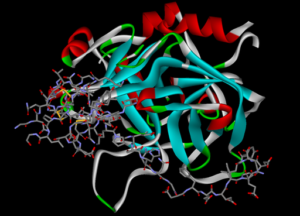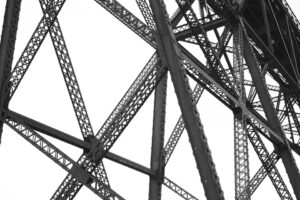 Fiber optic technology is highly promising now, in spite of the fact that fiber optic solutions found their place in numerous fields of application, the optical fiber sphere still continues developing. Thus, recently a group of researchers from the UK demonstrated a novel optical pressure-temperature gauge of compact size.
Fiber optic technology is highly promising now, in spite of the fact that fiber optic solutions found their place in numerous fields of application, the optical fiber sphere still continues developing. Thus, recently a group of researchers from the UK demonstrated a novel optical pressure-temperature gauge of compact size.
The optical gauge is considered to enlarge the fiber optic application, especially when it comes to a well surveillance area. Moreover, this optical device allows cutting all the costs and offering a new alternative to conventional downhole fiber sensors and other electronic logging tools.
Also, it should be mentioned that it is possible to combine the optical gauge with other devices, for example, with a simple deployment mechanism and distributed sensing technology, adding new properties and offering savings of 50-90% compared to traditional logging techniques.
A fiber optic gauge is a special tool that is based on fiber Bragg gratings without using electronics, external connections, or power supply equipment. Herewith, optical gauges provide the following advantages that include:
- Immunity to electromagnetic fields;
- Potential application in highly explosive environments;
- Ability to withstand high vibration loads without any mechanical failure of sensor material;
- Reduced number of connection lines and consequently, less impact on test purposes;
- Low interconnection is required because of the possibility to include numerous sensors with different fiber Bragg grating wavelengths in one optical fiber.
The novel optical gauge can be installed in the fiber optic line and used in harsh atmospheres. Moreover, this fiber optic device is able to measure up to 10,000 psi (689 bar) and 150°C (302°F), optionally enlarged to 20,000 psi (1,379 bar) and 300°C (572°F).
Herein, the size of the optical gauge is about 10 cu mm, that is why the device can be easily implemented in various optical sensors and even installed in narrow access wells to log data during descent and to capture bottom hole temperature and pressure over time.
Finally, the optical pressure-temperature gauge is able to operate several months without human control, streaming real-time, live well information along with the optical fiber back to the surface. Usually, fiber optic sensors are applied in complex surveillance systems that have a high cost, sometimes they need either batteries or electrical power as well as special equipment compared to the novel optical gauges. Nevertheless, FBG sensors remain number one in the market today due to their lightweight, simple installation and relatively low cost.
If you want to obtain a highly efficient sensing system, you should choose the Optromix company. Optromix is a manufacturer of innovative fiber optic products for the global market. The company provides the most technologically advanced fiber optic solutions for monitoring worldwide. Optromix is a fast-growing vendor of fiber Bragg grating (FBG) products line such as fiber Bragg grating sensors, FBG interrogators and multiplexers, distributed acoustic sensing (DAS) systems, distributed temperature sensing (DTS) systems. If you are interested in FBG sensors and want to learn more, please contact us at info@optromix.com


 At the present time
At the present time  Nowadays the process of main steel reinforcement corrosion is one of the most frequent problems that evokes structural deterioration and reduces its durability. However, the development of a new kind of long-gauge
Nowadays the process of main steel reinforcement corrosion is one of the most frequent problems that evokes structural deterioration and reduces its durability. However, the development of a new kind of long-gauge  Now it is highly important for the industrial sphere to have the ability of overhead transmission systems
Now it is highly important for the industrial sphere to have the ability of overhead transmission systems  Thrombin plays a very important role in normal and pathological blood coagulation because its high level is an indication of tumor cell presence. Also, the level of thrombin is growing while atherosclerosis, thromboembolic disease, cancer, and inflammatory disease. Thus, its clinical importance provokes the development of devices for fast and precise thrombin detection and most of them are based on aptamers.
Thrombin plays a very important role in normal and pathological blood coagulation because its high level is an indication of tumor cell presence. Also, the level of thrombin is growing while atherosclerosis, thromboembolic disease, cancer, and inflammatory disease. Thus, its clinical importance provokes the development of devices for fast and precise thrombin detection and most of them are based on aptamers.
 This year, for the first time ever, scientists have fabricated sensing elements known as
This year, for the first time ever, scientists have fabricated sensing elements known as  The pressure is one of the most physical parameters in a process industry, but traditional pressure sensors, mostly based on electrical strain gauge, vibration wire, mechanics, and suchlike are unable to adapt to the harsh environment and online monitoring at a long distance. Due to
The pressure is one of the most physical parameters in a process industry, but traditional pressure sensors, mostly based on electrical strain gauge, vibration wire, mechanics, and suchlike are unable to adapt to the harsh environment and online monitoring at a long distance. Due to  Optical fiber sensors
Optical fiber sensors Fiber Bragg gratings are often used in strain sensing especially in such places where the environment is harsh (for instance, high-EMI, high-temperature, or highly-corrosive). Strain measurement is imperative during prototype design and testing. Strain measurements ensure that materials perform as they should and that the equipment is safe and durable. Measuring strain is crucial for testing complex structures, like aircraft, turbines, etc. There various ways in which stress can be measured, but it is widely accepted that
Fiber Bragg gratings are often used in strain sensing especially in such places where the environment is harsh (for instance, high-EMI, high-temperature, or highly-corrosive). Strain measurement is imperative during prototype design and testing. Strain measurements ensure that materials perform as they should and that the equipment is safe and durable. Measuring strain is crucial for testing complex structures, like aircraft, turbines, etc. There various ways in which stress can be measured, but it is widely accepted that